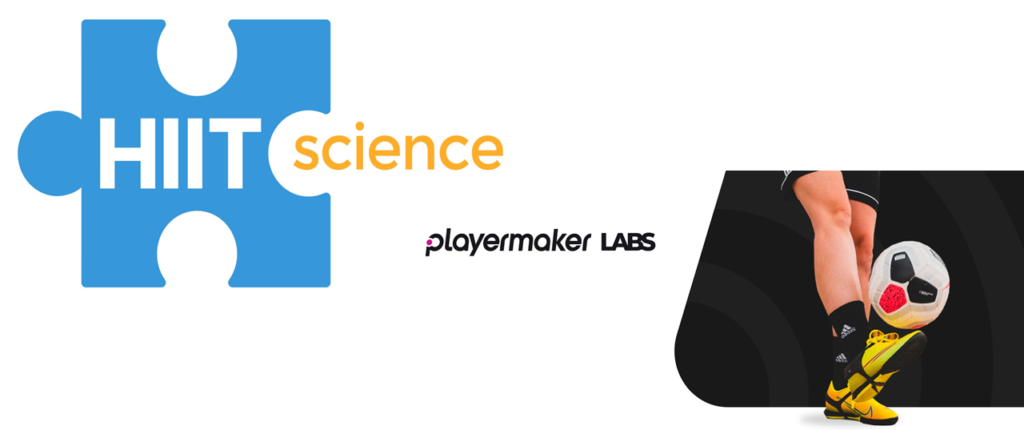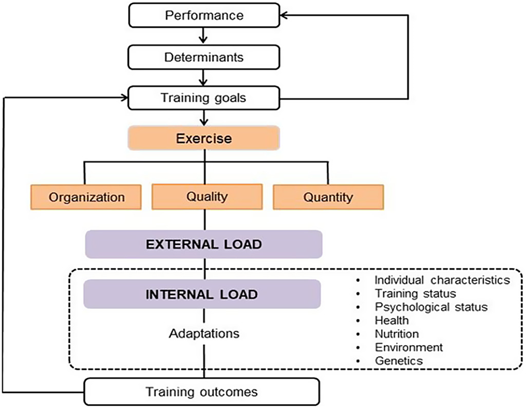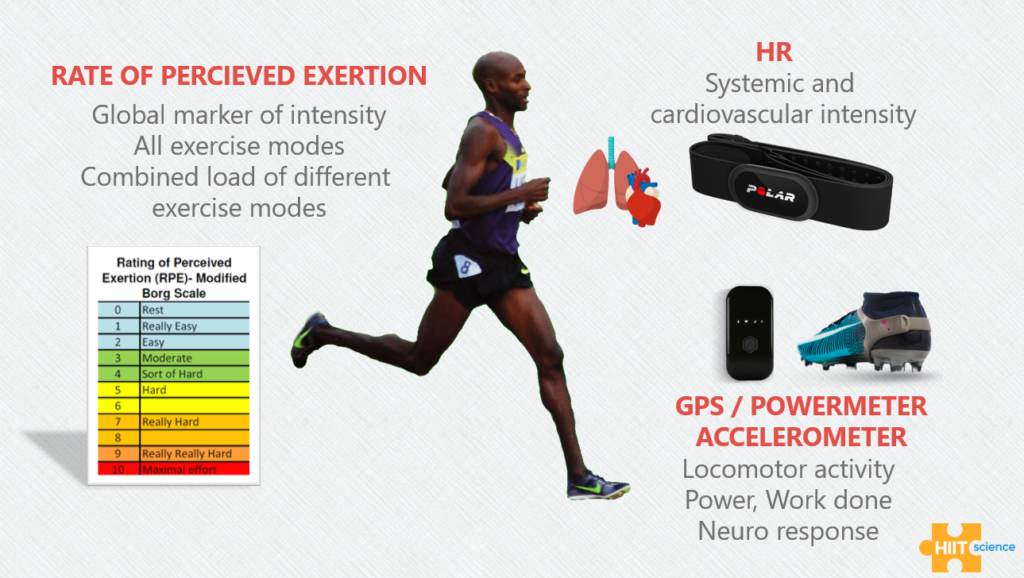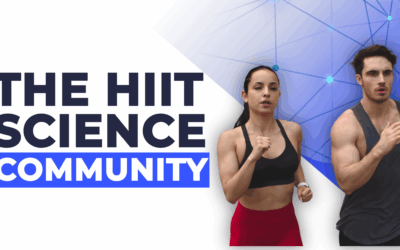 The popularity of high-intensity interval training (HIIT), which consists primarily of repeated short to long bursts of high-intensity exercise, continues to soar because its effectiveness and efficiency have been proven in use by both elite athletes and general fitness enthusiasts (Laursen & Buchheit, 2018). HIIT targets different physiological systems (HIIT Types) and can be implemented in various forms (HIIT formats, Figure 1), depending on the manipulation of both the exercise and recovery interval characteristics.
The popularity of high-intensity interval training (HIIT), which consists primarily of repeated short to long bursts of high-intensity exercise, continues to soar because its effectiveness and efficiency have been proven in use by both elite athletes and general fitness enthusiasts (Laursen & Buchheit, 2018). HIIT targets different physiological systems (HIIT Types) and can be implemented in various forms (HIIT formats, Figure 1), depending on the manipulation of both the exercise and recovery interval characteristics.

Figure 1. The key figure of HIIT Science. Once the context is determined, use this flow chart to consider your HIIT target based on the desired level of aerobic, anaerobic or neuromuscular responses. From these targets, select your HIIT weapon accordingly. Type 1: aerobic metabolic; Type 2: metabolic as type 1 but with a greater degree of neuromuscular strain; Type 3: metabolic as type 1 with a large anaerobic glycolytic energy contribution; Type 4: metabolic as type 3 but a high neuromuscular strain; Type 5: limited aerobic response but with a large anaerobic glycolytic energy contribution and high neuromuscular strain. More information about HIIT types here.
Training dose-response principle
Training programmes are designed to help athletes enhance their performance for competition, whilst also reducing risk of potential injury (Rodriguez et al., 2018).Practitioners have been exploring different methods to support these objectives by combining key training exercises and drills such as HIIT, while simultaneously monitoring the internal and external training load responses of these drills.This process has been referred to as the dose-response relationship, which is one of the underpinning principles of our discipline. To keep it simple, ‘work the player, to get a response’. For more detail, see image below from (Impellizzeri et al., 2018).

Figure 2. Franco M. Impellizzeri, Samuele M. Marcora and Aaron J. Coutts, 2018 (IJSPP Editorial; 15 years on).
Monitoring the complexity – conceptual approach
All sports are dynamic, occurring in the real world, and as a result, multifactorial in their energetic and physical requirements. As such, the specificity of our chosen monitoring tools needs to be reflective of the activities performed. However, depending on the activity, we may need to dive deeper into getting more ‘bang for buck’ from our sessions. Assessment of the specific system might be an alternate solution that can help practitioners specify the questions they are asking of their systems. One of the complexities that we face within the monitoring process is choosing the right solution and approach to gain a complete understanding of the load that we are trying to examine. For example, even within the ‘external’ and ‘internal’ load aspects, there are multiple weapons practitioners have at their disposal for their sport, depending on availability, cost and what can be implemented in practice (Akenhead & Nassis, 2016).But before talking about systems or technology, it’s important to outline clearly what it is we are really looking to measure. What is important?
External Load
For most sports with an important locomotor component, the external load, although highly specific to each activity, can be more or less accurately monitored by most of the current technologies; i.e., distance run with GPS, power developed with power meters, etc.Internal Load
When it comes to assessing internal training load however, which is the most important parameter when it comes to an individual training stimulus, associated fatigue and, in turn, adaptation (Impellizzieri 2018), there are so many biological systems involved that it would be impossible to measure them all, whatever the technology used. This is where Martin with Paul at HIIT Science have suggested the use of a simple approach (Figure 3) for assessing the internal demands of any exercise or drill. This approach uses a 3-level scale based essentially on the 2 main families of physiological capacities of the human body (energy metabolism and the neuromuscular system), which fall in line with the two main generic determinants of physical performance.
Figure 3. Key targets of importance with HIIT, including the aerobic oxidative system, the anaerobic glycolytic system, and the neuromuscular system.
Interestingly, these 2 families are also the typical variables or elements that we use for both planning and assessing training sessions.- Metabolic demands or metabolic load: – Aerobic: refers to overall oxidative systems, including both the central (cardiovascular and cardiopulmonary work) and peripheral (muscle) components. – Anaerobic: refers here mainly to the peripheral anaerobic glycolytic contribution to exercise (associated with decreased pH and lactate production).
- Neuromuscular demands or neuromuscular load: refers to the work of muscles and tendons, related to movements and the level of neuromuscular strength engagement (Figure 4).

Figure 4. A schematic overview of current available biomechanical/neuromuscular load metrics. For further details please see Verheul et al., 2020.
Measuring “metabolic” load in the field
Measuring the true metabolic load of a session is actually impossible in the field, since such assessment would require sophisticated machines such as MRI (PCr), gas analyzers (VO2) and blood measures (lactate, pH, etc; Osgnach et al., 2010; Osgnach & di Prampero, 2018).The only proper physiological measure that is accessible in the field is heart rate (HR), which is only a marker of the work intensity of the cardiovascular system that we generally use, despite large limitations, especially for intermittent exercise, as a proxy of the contribution of aerobic metabolism (Laursen & Buchheit, 2018).For the 2 other metabolisms, although modeling techniques to make inferences are under development (Zignoli et al. 2019), we currently fall short. In summary, HR is our only ally in this quest, and we know that this reliability is questionable – but it’s better than nothing!
Measuring “neuromuscular” load in the field
Neuromuscular load is a much harder variable to capture than metabolic load, since measuring muscle activity requires patches and often wires (EMG), and any type of strain on tendon, ligaments and joints would need to be examined with invasive sensors (Laursen & Buchheit, 2018). Moreover, neuromuscular load is highly dependent upon individual characteristics related to the athlete profile and fiber typology.So forget about measuring the true neuromuscular load in the field.What then can we do? We need a trick. We can try to estimate this neuromuscular load while making inferences from both the external load performed, and the acute neuromuscular changes in performance either during or immediately following a session or a drill.
The main idea is that the greater the external load, the likely greater the internal load.Likewise, the greater the decrease in locomotor performance during or following the drill, the likely greater the load as well. But this needs to be clear, — it’s only a guess.
External load will remain external load, and the typical modulator of internal load responses to a given external load (such as fitness, age, etc…) will systematically be lost in translation with this approach.But again, as with HR, it’s better than nothing! And this is where we believe that the Playermaker device can open new areas of understanding when it comes to assessing the neuromuscular load and responses to typical HIIT drills (Figure 1).
In addition to allowing the monitoring of typical locomotor external load measures with classic GPS systems (Waldron et al., 2020), Playermaker gives access to gait and stride characteristics during the exercise (Amit et al., 2020).Why is this important? Well, it’s established that with fatigue, running patterns change (Small et al., 2009). Even when players manage to maintain the required running speed to perform the task (i.e., run those 80 m in 15 s), leg stiffness tends to decrease with fatigue, strides shorten and contact time increases (Morin, 2006).
This is of interest to any practitioner since by simply measuring those specific changes with the Playermaker technology, we can now for the first time assess real-time fatigue during (HIIT) drills or matches.As explained above, this is still only a measure of the acute neuromuscular response to the actual load of the exercise of interest, but following our reasoning, the greater the stride pattern impairments, the likely greater the neuromuscular load, right? Finally, when it comes to monitoring internal load, we can’t finish this post without mentioning the rating of perceived exertion (RPE), as the global marker of internal load; likely integrating various sources of load, including both metabolic and neuromuscular loads, but not exclusively (e.g., temperature, cognitive and psychological aspects) (Figure 5).
 Figure 5. Tools to monitor training load as suggested by HIITScience. Heart rate (HR) and rating of perceived exertion (RPE) are true measures of internal load, locomotor work as measured by either GPS, accelerometers or power meter as a measure of external load. However, acute changes in stride parameters during or immediately after exercise (which are rather a “response to load” type of measure) can be used as a “trick” to infer the actual neuromuscular load.
Figure 5. Tools to monitor training load as suggested by HIITScience. Heart rate (HR) and rating of perceived exertion (RPE) are true measures of internal load, locomotor work as measured by either GPS, accelerometers or power meter as a measure of external load. However, acute changes in stride parameters during or immediately after exercise (which are rather a “response to load” type of measure) can be used as a “trick” to infer the actual neuromuscular load.
Today, advances in technology and the development of the Playermaker system offer new insight into the monitoring of neuromuscular load during HIIT.In the future, greater insight will be gained through the collaboration of researchers and practitioners intent on further understanding the neuromuscular loading “dose” and “response”, to better prepare athletes at the individual level. In this respect, we’re working hard behind the scenes to do our part through our HIIT Science / Playermaker collaboration. If you’d like to join our efforts, please get in touch.
References
- Laursen & Buchheit, 2018 – Science and Application of High-Intensity Interval Training: Solutions to the Programming Puzzle (HIITScience Book & Course)
- Rodriguez et al., 2018 – https://pubmed.ncbi.nlm.nih.gov/28222578/
- Impelizzeri et al., 2018 – https://pubmed.ncbi.nlm.nih.gov/30614348/
- Morin et al, 2006 – https://pubmed.ncbi.nlm.nih.gov/16475063/
- Zignoli et al., 2019 – https://link.springer.com/article/10.1007/s11332-019-00557-x#citeas
- Akenhead & Nasis, 2016- https://pubmed.ncbi.nlm.nih.gov/26456711/
- Osgnach et al., 2010- https://pubmed.ncbi.nlm.nih.gov/20010116/
- Osgnach & di Prampero, 2018 – https://pubmed.ncbi.nlm.nih.gov/29902808/
- Waldron et al., 2020 – https://www.researchgate.net/publication/346010673
- Amit et al., 2020- https://playermaker.com/from-the-lab-to-the-field/
- Small et al., 2009- https://pubmed.ncbi.nlm.nih.gov/19455478/
- Morin, 2006- https://pubmed.ncbi.nlm.nih.gov/16475063/






